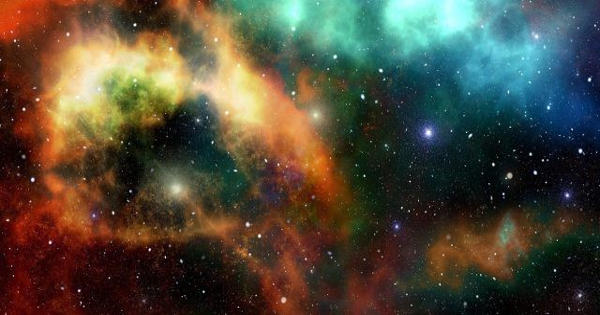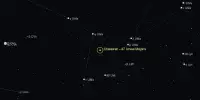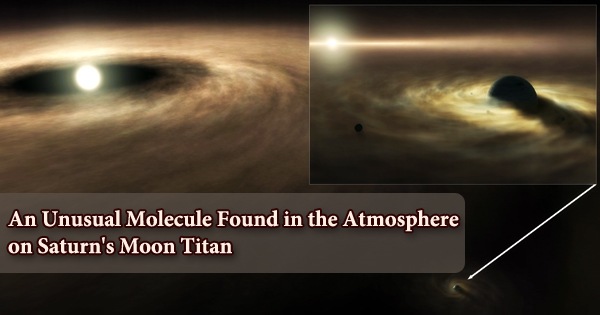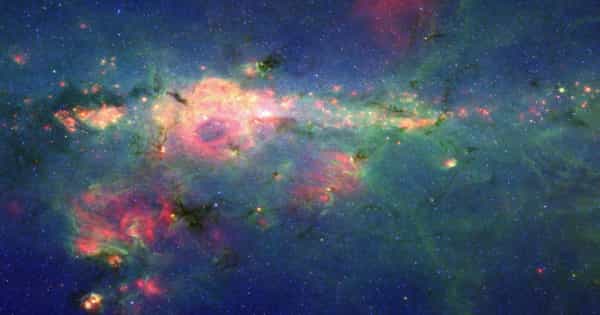Radio telescopes are the world’s most sensitive radio receivers, capable of detecting extremely faint wisps of radio emission from objects in the universe’s farthest reaches. A team of astronomers recently used the National Science Foundation’s Karl G. Jansky Very Large Array (VLA) to detect a distant galaxy that is likely the faintest radio-emitting object ever discovered.
The discovery was made as part of the VLA Frontier Fields Legacy Survey, which was led by NRAO Astronomer Eric Murphy and used distant clusters of galaxies as natural lenses to study objects that were even further away. The clusters acted as gravitational lenses, bending and magnifying light and radio waves from more distant objects by utilizing the gravitational pull of the galaxies in the clusters.
Astronomers used the Very Large Array to study objects billions of light years away by using distant clusters of galaxies as natural lenses. The clusters acted as gravitational lenses, bending and magnifying (radio) light from more distant objects by harnessing the gravitational pull of the galaxy clusters.
Astronomers using the VLA took advantage of the gravitational lensing provided by a distant cluster of galaxies to detect an even more distant galaxy that probably is the faintest radio-emitting object ever found.
In this composite, a VLA radio image is superimposed on a Hubble Space Telescope visible-light image. The prominent red-orange objects are radio relics – large structures possibly caused by shock waves – within the foreground galaxy cluster MACSJ0717.5+3745, which is more than 5 billion light-years away from Earth.
Many of the galaxies in this image emit radio waves in addition to visible light, according to detailed VLA observations. One of these galaxies, shown in the pullout, is more than 8 billion light-years away, according to VLA data. Its light and radio waves have been bent by the gravitational-lensing effect of the intervening cluster.

The US NRAO is a National Science Foundation (NSF) facility run by Associated Universities, Inc. (AUI), a consortium of nine leading private universities, under a cooperative agreement. Its headquarters are located in Charlottesville, Virginia. The National Radio Astronomy Observatory (NRAO), founded in 1956, provides cutting-edge radio telescope facilities to the international scientific community. All astronomers, regardless of institutional or national affiliation, are welcome to use the NRAO telescopes. NRAO also offers formal and informal education and public outreach programs for teachers, students, the general public, and the media.
The gravitational lens magnified the radio image of this distant galaxy, VLAHFF-J071736.66+374506.4, by more than 6 times, according to the astronomers. The VLA was able to detect it due to the magnification.
“This is almost certainly the faintest radio-emitting object ever detected,” said Ian Heywood of Oxford University in the United Kingdom. “This is precisely why we want to use these galaxy clusters as powerful cosmic lenses to learn more about the objects that lie beneath them.”
“The gravitational lens’ magnification, combined with extremely sensitive VLA imaging, allowed us to see the structure of a galaxy 300 times less massive than our Milky Way at a time when the universe was less than half its current age. This provides us with valuable information about star formation in such low-mass galaxies at the time, as well as how they eventually assembled into more massive galaxies “said NRAO’s Eric Jimenez-Andrade.
The researchers have reported their findings in two papers that have been accepted for publication in the Astrophysical Journal.
















